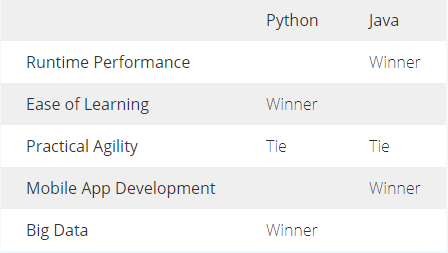|
Bitcoin halving is often referred to as “Halvening”, it’s a formulated reduction in the reward coins offered to the miners using a predefined blockchain algorithm. Bitcoin halvings take place once in every four – 4 years approximately, or for every 210,000 block transactions. The process of halvening started in the year 2012, approximately after 4 years of the invention of bitcoin i.e 2008, but practically bitcoins came into play in the year 2009. After the first bitcoin halving, the block reward of 50 bitcoins per transaction were reduced to 25 bitcoins per block or transaction, later this reward was further reduced to 12.5 and it has now fallen to 6.25 after halvening in 2020. The main idea of halvening is to create scarcity for the coins and to control inflation, as bitcoins issuance is limited to 21 million coins as per the idea of Satoshi Nakamoto, inventor of Bitcoin. The production of 21 million bitcoins involves 32 halvenings, we are now done with two halvenings and this might continue till or come to an end in the year 2140. Investors from all over the world are excited and waiting for the Bitcoin price to increase, and the demand for bitcoins in the online gambling industry is high. Bitcoins are widely accepted at Bitcoin Casinos as they collect deposits in the form of cryptocurrency from their players. To know the overview of Bitcoin Halving (Just in minutes), check out the following infographic developed by Abishai James at WinBTC.net in partnership with ACMarket.  Abishai James is a Bitcoin investor and trader, operating at WinBTC.net. He can be reached at [email protected].
0 Comments
 Visit HostingClues Visit HostingClues The internet is the backbone for modern-day civilization, which is growing at a rapid scale. As such, if you are invested in the internet, then you must gain insights into the current trends that are happening on the market. Having a quantitative idea with access to real statistics and figures will help you make a sound objective business decision. Therefore, we have put together a comprehensive list of some of the most fascinating statistics and facts about the internet. So without further ado, let’s get started: if you want to understand the different intricacies of the world wide web, then check out this in-depth infographic now! Full datasets, details and statistics originally published by hostingclues.com, all rights reserved.  About Natalie Christen Natalie Christen is a Tech & Social enthusiast. She is also a Web Entrepreneur by Profession and loves to write about the latest trends on Social Media & SEO. You may also follow Hosting Clues on Twitter | Facebook | Pinterest Coding Toys for Younger KidsFor kids 10 and under, there are many games and toys that help them understand the building blocks of computer programming. For example, Bitsbox delivers a physical box to your home every month containing a kit of projects, and then your young child can login to Bitsbox’s online platform to program their own version of these projects. The apps are selected based on difficulty and interests - they offer anything from interactive birthday cards to Tetris-like games. The apps can then be easily shared onto phones and tablets. The Osmo is an iPad-based programming game system that incorporates physical blocks to write code. Using a set of magnetic blocks, your child controls Awbie, a cute character who must navigate the different levels of the Osmo universe. The physical blocks must be connected together logically so that Awbie can move on screen, using commands like “move,” “turn,” and “repeat.” The Osmo is ideal for kids as young as five years old because they don’t need typing skills to learn the basics of programming logic and to practice their critical thinking skills. After your child has mastered Awbie, they can move onto Osmo’s other products like Coding Jam, which uses a similar block system to generate digital music, and Coding Duo, a more advanced version of Coding Awbie with multiple players. Cubetto is a completely screenless coding toy for kids 6 and under. Cubetto is a wooden robot that is programmed by placing colored blocks onto its surface, which instructs it where to move. The Cubetto is placed on top of different maps, mazes, and books. For example, in one challenge Cubetto must navigate around a big urban city. In another, he is in ancient Egypt, learning about pyramids, hieroglyphics, and the Sphinx. This is a great toy that encourages active play and critical thinking without any screens. Coding Games for Older KidsFor older kids who love robots, the Anki Cozmo is a palm-sized robot, built with facial recognition, self-maneuvering capabilities, and an “emotion engine” to respond to real-world situations. It comes with a Code Lab app for users to program the Cozmo’s movements and responses to different environments. Code Lab is built on Scratch, a visual programming language. For example, you can use Code Lab to program Cozmo to move around and write his name, or to approach a human and Cozmo recognizes his or her face. There is even a more extensive software development kit to tap into the Cozmo’s computer vision capabilities and third party integrations (like with Google Assistant and Android). Kids can also play games with Cozmo like Memory Match and Keepaway. If your child is interested in building hardware, the Kano might be the best toy for them. With the Kano, you follow a storybook to build a simple computer. The kit comes with a power supply, Raspberry Pi (the chip that powers the computer), keyboard, SD card, and optionally a microphone and an HD touchscreen. Once built, the touchscreen version allows you to program your own art, games and music. The coding starts with a block-based environment, but for more advanced students, there are projects available in Python and Javascript programming languages. Many kids this age love Minecraft, an open-ended game where users can build their own worlds and experiences using the resources they acquire. Building in Minecraft is very Lego-like, where the pieces are varied and fit together in infinite combinations. Given the nature of Minecraft, “modding” the game is extremely popular, where you create new items, resources, and functionality by programming extensions to Minecraft’s code. The most popular mods, for example, add new animals, crops, and furniture pieces to the game; allow you to monitor and control your inventory more efficiently; and even introduce magic and wand-making into the game. While modding Minecraft was not designed for beginning programmers, there are sites dedicated for helping kids learn how to mod with online tutorials like LearnToMod and books like Coding with Minecraft. Online Coding Games and PlatformsThere are also many online-based games and platform for students to start learning programming. CodeCombat offers a series of online levels in settings like the Kithgard Dungeon and the Backwoods Forest. Students gain points by completing challenges so that they can advance to the next level and buy power-ups. CodeMonkey is another online game where the student moves through a series of challenges in tracks like Coding Adventure and Coding Chatbots. The main language they focus on is CoffeeScript. For students who want to take a more rigorous course, Khan Academy offers self-paced courses in HTML, CSS, and Javascript, focusing on website and game development. These courses include online videos, written explanations, and coding exercises. This article originally appeared on junilearning.com
Article copyright © protected, all rights reserved. Reuse of this article or any of its content by permission only.
Andrea Domiter NOVEMBER 08, 2019 Python vs. Java: Uses, Performance, LearningIn the world of computer science, there are many programming languages, and no single language is superior to another. In other words, each language is best suited to solve certain problems, and in fact there is often no one best language to choose for a given programming project. For this reason, it is important for students who wish to develop software or to solve interesting problems through code to have strong computer science fundamentals that will apply across any programming language. Programming languages tend to share certain characteristics in how they function, for example in the way they deal with memory usage or how heavily they use objects. Students will start seeing these patterns as they are exposed to more languages. This article will focus primarily on Python versus Java, which are two of the most widely used programming languages in the world. While it is hard to measure exactly the rate at which each programming language is growing, these are two of the most popular programming languages used in industry today. One major difference between Python and Java is that Python is dynamically typed, while Java is statically typed. Loosely, this means that Java is much more strict about how variables are defined and used in code. As a result, Java tends to be more verbose in its syntax, which is one of the reasons we recommend learning Python before Java for beginners. For example, here is how you would create a variable named numbers that holds the numbers 0 through 9 in Python: numbers = [] for i in range(10): numbers.append(i) ArrayList numbers = new ArrayList(); for (int i = 0; i < 10; i++) { numbers.add(i); } Another major difference is that Java generally runs programs more quickly than Python, as it is a compiled language. This means that before a program is actually run, the compiler translates the Java code into machine-level code. By contrast, Python is an interpreted language, meaning there is no compile step. Usage and PracticalityHistorically, Java has been the more popular language in part due to its lengthy legacy. However, Python is rapidly gaining ground. According to Github’s State of the Octoberst Report, it has recently surpassed Java as the most widely used programming language. As per the 2018 developer survey, Python is now the fastest-growing computer programing language. Both Python and Java have large communities of developers to answer questions on websites like Stack Overflow. As you can see from Stack Overflow trends, Python surpassed Java in terms the percentage of questions asked about it on Stack Overflow in 2017. At the time of writing, about 13% of the questions on Stack Overflow are tagged with Python, while about 8% are tagged with Java! Web DevelopmentPython and Java can both be used for backend web development. Typically developers will use the Django and Flask frameworks for Python and Spring for Java. Python is known for its code readability, meaning Python code is clean, readable, and concise. Python also has a large, comprehensive set of modules, packages, and libraries that exist beyond its standard library, developed by the community of Python enthusiasts. Java has a similar ecosystem, although perhaps to a lesser extent. Mobile App DevelopmentIn terms of mobile app development, Java dominates the field, as it is the primary langauge used for building Android apps and games. Thanks to the aforementioned tailored libraries, developers have the option to write Android apps by leveraging robust frameworks and development tools built specifically for the operating system. Currently, Python is not used commonly for mobile development, although there are tools like Kivyand BeeWare that allow you to write code once and deploy apps across Windows, OS X, iOS, and Android. Machine Learning and Big DataConversely, in the world of machine learning and data science, Python is the most popular language. Python is often used for big data, scientific computing, and artificial intelligence (A.I.) projects. The vast majority of data scientists and machine learning programmers opt for Python over Java while working on projects that involve sentiment analysis. At the same time, it is important to note that many machine learning programmers may choose to use Java while they work on projects related to network security, cyber attack prevention, and fraud detection. Where to StartWhen it comes to learning the foundations of programming, many studies have concluded that it is easier to learn Python over Java, due to Python's simple and intuitive syntax, as seen in the earlier example. Java programs often have more boilerplate code - sections of code that have to be included in many places with little or no alteration - than Python. That being said, there are some notable advantages to Java, in particular its speed as a compiled language. Learning both Python and Java will give students exposure to two languages that lay their foundation on similar computer science concepts, yet differ in educational ways. Overall, it is clear that both Python and Java are powerful programming languages in practice, and it would be advisable for any aspiring software developer to learn both languages proficiently. Programmers should compare Python and Java based on the specific needs of each software development project, as opposed to simply learning the one language that they prefer. In short, neither language is superior to another, and programmers should aim to have both in their coding experience. This article originally appeared on junilearning.com
Article copyright © protected, all rights reserved. Reuse of this article or any of its content by permission only. Julia Geer October 19th, 2019 Is Coding a Fad?In short, no. Coding is a field that is growing and changing quickly; there is a world of opportunity for young students looking to get involved in the tech world. Opponents to this position might argue that today’s popular languages, like Python, won’t be used ten or fifteen years down the line. So what’s the use in learning these programming languages? While it is true that programming will continue to advance, it is important to remember that there is so much more to learning a coding language like Python than memorizing syntax and applications. When we teach coding, we teach concepts beyond one particular language. Students gain knowledge about how computers process and “think” about a given problem, regardless of which language they are learning. They gain important intuition about fundamental concepts, like basic control structures (e.g. loops and conditional statements) and algorithms, that will undoubtedly be useful in our highly technological future. Below are 8 of the many reasons why coding for kids is not just another trendy or silly fad. 1. Our world is growing more technologicalIn the 21st century, we have seen enormous developments in the technology industry. The world is moving in a direction that is both fast-paced and information-centered. Data is quickly becoming one of the most valuable resources in the global economy, and individuals with digital literacy are becoming more valued in the labor market. With all of this in mind, it’s hard to ignore the massive role that fields like data science and software engineering, both largely centered around coding, are going to have. Figures estimate seemingly outrageous numbers - an estimated fifty billion smart devices are projected to be in use by 2020 - illustrating the abundance of technology in our lives.With such statistics in our near futures, it is clear to see that industries are changing. The internet is a hub of information, applications, e-commerce, social networking, and communication platforms, all of which are designed to increase efficiency, performance, and convenience. As industries become digitized, new jobs are simultaneously emerging. Coding is an asset that will only continue to grow as we move forward as an increasingly connected society. 2. It teaches kids to strategize for unique solutionsComputer science is a highly useful tool beyond its direct applications. As there is rarely one right answer to a given problem, computer science encourages students to create solutions that are unique. For computer scientists, this means that coders have a great amount of leeway to create their own intuitive solutions. Teaching kids how to code pushes young students to actually learn, not just memorize facts and regurgitate them. It challenges students to critically think about a problem, what they want to accomplish, and how to get it done. There are plenty of kid-friendly coding languages, such as Scratch, that give young students the opportunity to build unique projects using coding techniques. Scratch also allows coders to share their projects with the world. This connectivity can inspire new and aspiring coders to learn from their peers and guide them through more complicated projects and concepts. This collaborative environment also allows students to work together and learn from one another. Encouraging kids to utilize these programs not only teaches them useful skills for computer science, but it also allows them to exercise their creativity. 3. It teaches students to not give upMost coders will advise, while there is plenty of room for creativity in coding, there is also plenty of room for error. Learning to code teaches students how not to give up on their solutions, but rather to debug their code, even when repeated error messages appear. Coders tease out solutions by using their understanding of computational thinking (see point 6) to isolate any errors and achieve the goal at hand. That code can always be improved upon motivates coding students to go back and better their solutions, an incredibly valuable skill set to have in general. Code also instills resilience, yet another invaluable tool in the workplace. While programming can feel tedious, frustrating, and difficult at times, the process of problem solving inherently makes for better coders and better students. 4. It can be applied to almost everything that students are learningComputer science is expanding into every corner of the world, with applications for anything one can imagine and automated services that are permeating thousands of business models worldwide. On top of that, programming incorporates many mathematical concepts, and it can complement the concepts students are learning in their math classes. Coding also promotes problem-solving, an important skill for any student. Beyond math, students can use code to support other interests they may have. With coding, young professionals’ career options extend across industries. By teaching kids how to code, students will find the confidence and tools to explore aspects of software engineering, data analysis, video game development, and mobile app development - in just about any industry that they know and love. 5. It is challenging and collaborativeCoding challenges young students to explore new fields. Computer science is a collaborative field, allowing individuals to work together to complement one another’s skill sets, and write code that is efficient and intuitive. Students can and often do learn to code in a group setting, so that they can discuss their ideas and learn from each other’s successes. Learning to code encourages students to work together when they reach a roadblock. It promotes collaboration via idea exchange and allows students’ to compare and contrast solutions. Teaching kids about computer programming can be a catalyst for inspiring teamwork and leadership among students. 6. It teaches students about computational thinkingWhichever languages a student decides to pursue - Python, Java, or any of the long list of popular coding languages today - will help them develop computational thinking. This means that students will learn how to effectively break down problems into manageable parts, observe patterns in data, identify how these patterns are generated, and develop the step-by-step instructions for solving those problems. Computational thinking and digital literacy are arguably the most important aspect to learning to code at any age due to the huge technological shift in nearly every industry on the global market (see point 1). Establishing a foundation in computational thinking will pave the way for future success in and outside CS related fields. All students can benefit from understanding computational thinking, as it applies to the technological aspects of daily life. 7. It’s good for the brainLike any good challenge, coding is an excellent way to strengthen young, developing brains. It encourages students to combine their knowledge of computational learning and out-of-the-box thinking to strategize unique solutions. Multiple studies support the hypothesis that learning to code has real, long term benefits on young children. Researchers have found that individuals who code tend to have reduced odds of getting neuro-degenerative diseases in older age. Coders also tend to do better in cognitive tasks, because coding activates areas of the brain that are associated with memory, attention, and logic. Learning to code at an early age supports neural connections in these regions, leading to high performance in other fields, as well. 8. It’s fun!While we may be slightly biased, computer science is an educational way to bring fun into your children’s lives! Computer science is one of the few fields of study in which students can see the immediate outcome of their work as they build out their projects - by running their code, they get instant, live feedback. Programs like Scratch and Repl.it utilize software that is kid-friendly and permits students to visualize their projects as they come to life! They can build code that creates a videogame or a website and share their work with friends. Developing kids’ proficiency with computer science now will lead to a future generation of coders who have the skill set to advance our world. This article originally appeared on junilearning.com on October 19th, 2019  Julia Geer is studying Cognitive Science at UC Berkeley and is a former instructor at Juni Learning. She has an interest in the applications of coding in data analytics and digital marketing. In her spare time, Julia loves finding new restaurants, going to the beach, and discovering new music.
Warm Welcome to this new content Publishing partnership |
| Click here to sign up for Work for Impact and start discovering meaningful freelance opportunities. |
According to the Owl Labs 2019 State Of Remote Work report, US-based remote employees tend to work more than the standard 40 hours per week—that's 43% more than on-site workers. And while working at home can help people be more productive, there is also an increased threat of loneliness and impostor syndrome, which can lead to risks of depression and burnout.
Indeed, reaching peak “hermit” lifestyle as a remote worker goes beyond the pyjama jokes. These serious risks can be exacerbated simply because you’re not held accountable by physical means like the janitor turning out the lights.
Beyond the fundamentals, however, a truly great day at the home office is about the little things.
After all, you have so much opportunity to craft a great environment, work according to your ideal schedule, and live a life without wasted commute time! Keeping your day interesting, without putting too much pressure on perfection, is what’s really important.
To stave off that “stuck” feeling when working remotely, here are a few quirky, small-yet-mighty, perhaps even weird, ways to inject a little fun, happiness, and socialization into your day.
7 Weird Ways To Stay Balanced When Working From Home
Treating your work day like you would if you were going to an office ensures you're up, dressed, and well fed all day long. You’ll be ready for anything, including accepting a last-minute coffee date with a friend or dropping into a video chat with your boss. As Henry Ford wisely said: “Before everything else, getting ready is the secret to success.” Of course, what constitutes feeling “ready” is up to you, but you should always make your bed. It also means you can use your morning routine for other things!
Author Ayn Rand has been famously quoted as defining a demanding pleasure as something enjoyable that “uses one’s mind.” She goes on to point out that it should be something that requires “discrimination, judgement, awareness” rather than something that requires problem-solving. Avoid early onset decision fatigue by keeping routine choices and chores to a minimum, and choose personally productive pastimes instead.
Whatever you choose, the activities should be interesting and rewarding so that you’re motivated to get up and do them every day, with a dash of new learnings or the use of creativity. Personally, I like to switch things up between reading and writing on personal projects, accompanied by a short morning meditation, a walk with my dog, and a rotating set of new smoothie recipes.
Here’s an easy win: The best thing you can do is use your non-commute time in the morning to go walk outside and get some fresh air. Regular, moderate, exercise is directly correlated to an increase in productivity, and according to Harvard Business Review, is a key factor in helping you achieve a better work-life balance.
In fact, data from US Spotify and Echo Nest users revealed that, by age 33, it is likely that a listener will never listen to new music again. Stop the slowdown and listen to Youtube or Spotify with one ear for new tracks. New music keeps you receptive to learning new things, and having a "side project" of mixing playlists gives you constructive energy in a low-key way all day. Plus you can share them with your friends!
- If you are an audiophile like me, play vinyl throughout your workday at a distance from your desk so that you need to get up and flip the record every half hour.
- Leave your phone in the kitchen so you have to get up and check it when it pings (providing that you’ve managed your notifications so it doesn’t ring every five minutes!)
- Don’t keep snacks or drinks within easy reach.
Overall, if you’re bad at getting up from your desk regularly, build simple movements into your day in 20-30 minute intervals with things that break your concentration and say, “Hey, you should get up and do this thing for a few minutes.” Once you get there, give that thing a few minutes of concentration to make it a true mini-break.
We fundamentally need other people to survive for our emotional wellbeing and even to live a longer, healthier life. It’s truly becoming harder to have meaningful interactions with other people: A report from Cigna found that only half of respondents had a meaningful in-person social interaction each day. On the bright side, science has figured out exactly how to make new friends, and it turns out that all it takes is time.
Research published in the Journal of Social and Personal Relationships calculated that it takes an average of 50 hours with someone before they feel like a casual friend, another 40 hours to become real friends, and a total 200 hours before you’ll ask them to be in your wedding party. So start frequenting places or events that attract the same people on a routine basis, make an effort to chat with those folks, and you’ll have a new crew in no time!
Work Like No One’s Watching
Remote work can give you the freedom of flexibility, time, and a creative space you can call your own. Take advantage of it, and develop your own weird habits to create a daily experience that’s rewarding and, well, worth working for.
This article was updated as of March 2020
| By Leah Ryder on January 16, 2019 Leah Ryder works on all things content and marketing at Trello. When she's not perfecting her board workflow, she's writing about productivity, digital trends, and being a remote worker (on an island). |
CREATE A CULTURE THAT CELEBRATES FAILURE
It’s often said that there are no bad ideas, and that’s a great rule of thumb for sparking innovation. McKinsey advises to take this thinking a step further: “you should also encourage the truly impractical in some situations—for example, when conducting scenario-planning exercises to unearth potential competitive threats.” Pie-in-the-sky ideas can lead to actionable and innovative ideas that can be executed. Just look at how dozens of products we use each day came from NASA’s space exploration research and experimentation.
CREATE SPACE FOR PRODUCT INNOVATION BRAINSTORMING
A hackathon is one way to encourage employees to set aside their day-to-day tasks in favor of product innovation. “Companies far outside the tech world are using these intense brainstorming and development sessions to stir up new ideas on everything from culture change to supply chain management,” writes Harvard Business Review. Involve members from all teams in your company, not just your product team or tech team. Some companies choose a particular topic to inspire innovation; others see what their employees choose to work on, and learn insights from their approach.
Other companies encourage product developers and scientists to pursue passion projects on company time. They invest in their employees by offering training, workshops, and professional development. Google, for instance, follows the 70/30/10 model:
70% of projects are dedicated to Google’s core business
20% of projects are related to Google’s core business
10% of projects are unrelated to Google’s core business
The 10% of projects that are unrelated to Google’s core business inevitably lead to some insight, invention, or innovation that impacts the brand’s bigger goals. And, their employees are happier and more engaged with their work in the process.
GET SOME OUTSIDE HELP
Outside help can also come from your customers. Don’t be shy about asking your loyal customers for their input on what products to develop next. Turn to your social media channels to ask your followers what they want to see next. If you have a rewards program or loyalty program, invite your best customers to an exclusive event where you can get their feedback about your brand. If you’re not comfortable or willing to go to your customers, mine their data for behavioral insights or buying patterns that can indicate where the market is going next. Trend watchers like Mintel can help you innovate based on data from your target audience.
| Article authored/curated by Amanda Hughes Amanda Hughest a Marketing Professional working for Gembah, a global manufacturing company that offers solutions covering entire product creation, from ideation to manufacturing to shipping and logistics, to people and companies who want to build better products. |
FOLDABLE TABLETS AND LAPTOPS
WITHINGS SCANWATCH
AMAZFIT HOMESTUDIO
The Amazfit HomeStudio combines expertise from both brands: the treadmill tracks metrics such as time, heart rate, distance, and calorie consumption, and even measures your form to offer tips to improve your running. The “Glass” screen in front of the track offers classes from Studio’s more than 1,000 online fitness classes, with a focus on treadmill running.
HYDRALOOP WATER RECYCLER
Hydraloop recyclers are already in use in Africa and Europe; not only do they save the planet, but they can save money. By company estimates, a four-person household can save up to 20,000 gallons of water per year.
MOTION PILLOW
| Article authored/curated by Amanda Hughes Amanda Hughest a Marketing Professional working for Gembah, a global manufacturing company that offers solutions covering entire product creation, from ideation to manufacturing to shipping and logistics, to people and companies who want to build better products. |
WHAT IS A SOURCING AGENT?
- Work with a third party
- Work directly with the manufacturer (direct purchase)
- Work with a trader or distributor
- Work with a sourcing agent
THE RISKS OF WORKING WITH SOURCING AGENTS
On the other hand, more than 90% of sourcing agents are reported to get hidden commissions from factories. “As a result, when things go wrong, they often tend to defend the factory,” writes one expert. “Some intermediaries are invaluable. Others are completely incompetent or, even worse, flat out crooks. Some do not even reveal that they are acting as an intermediary, leading you to believe you are dealing directly with the factory.”
Sourcing agents commonly take advantage of uninformed entrepreneurs by manipulating the pricing scheme in the factory’s favor. There are a few ways that a sourcing agent charges for their work. Some charge a large flat fee upfront; others charge “a percentage of your manufacturing transactions for some set period of time or a set number of transactions.”
In each of these instances, it’s easy for the sourcing agent to find a low-cost (and often low-quality) manufacturer and split the difference with the factory. For instance, a sourcing agent could charge an entrepreneur $1,000 upfront for a job that costs $500. The $500 difference gets split between the sourcing agent and the manufacturer – and the entrepreneur knows nothing. Other sourcing agents charge hidden commissions or work simply source the product from a different factory than the one they’ve advertised.
HOW TO VET A SOURCING AGENT
| Article authored/curated by Amanda Hughes Amanda Hughest a Marketing Professional working for Gembah, a global manufacturing company that offers solutions covering entire product creation, from ideation to manufacturing to shipping and logistics, to people and companies who want to build better products. |
The Author
I dedicate my life to science, technology, music and to bringing people together. And I do it my way.
Archives
November 2023
September 2022
August 2021
March 2021
August 2020
July 2020
March 2020
February 2020
January 2020
December 2019
November 2019
February 2019
November 2018
October 2018
August 2018
July 2018
June 2018
September 2017
August 2017
June 2017
March 2017
December 2016
November 2016
Categories
All
Being A Misfit
Big Data
Bitcoin Halving
Blockchain
Computer Science Education
Copywriting
Data Sciences
Employment
Finding A Gig
Freelance
Freelancing
Fringe Scientific Philosophy
GEMBAH
Hosting Clues
Infographics
Internet Statistics & Facts
Juni Learning
Legal Documents
Manufacturing
Personal Finance
Productivity
Remote Worker
Tools For Misfits
WinBTC.net
Work For Impact
Work From Home































 RSS Feed
RSS Feed
